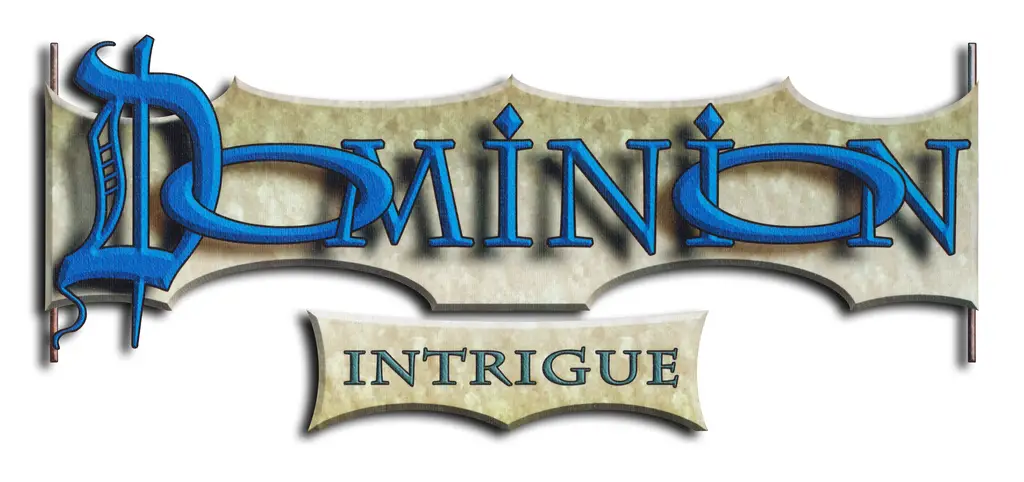
A player is allowed to count how many cards are left in his Deck, but not in his Discard pile. A player may not look through his Deck or his Discard pile. A player may look through the Trash pile, and players may count the number of cards left in any pile in the Supply.
If an ability of a card affects multiple players, and the order matters, resolve that ability for each affected player in turn order, starting with the player whose turn it is.
At any point in the game, if a player has to draw or reveal more cards than are remaining in his Deck, he must draw or reveal as many as he can and then shuffle his face-up Discard pile to form a new face-down Deck.
Then, he draws or reveals the remaining number of cards from his newly shuffled Deck. If a player's Deck is empty, he does not shuffle his Discard pile until he needs to reveal or draw a card from his Deck and cannot.
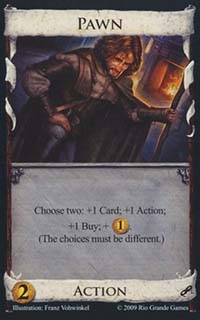
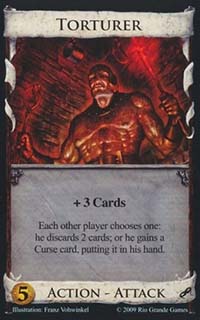
Some cards in this expansion give a player a choice between two or more options (such as Minion, Nobles, Pawn, Steward, Torturer). The player may pick any choice offered, even if he cannot do what it tells him to do, but once he makes a choice, he must complete as much of it as he can. Specific examples of this rule are given in the descriptions for cards later in the rules.
Some cards allow you to choose to generate coins for the turn. When several choice cards are played in one turn and some of them generate coins, you may want to indicate this somehow in order to remember how many additional coins you have to spend during the Buy phase. For example, you can push the cards that made money up slightly from the line of cards you play.
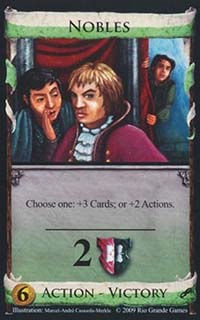
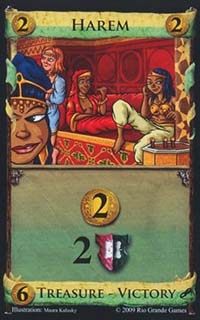
Some cards in this expansion are both Victory cards and another type as well (Great Hall, Harem, Nobles). These cards are both types for all purposes. Great Hall and Nobles can be played like normal Actions; Harem can be spent like a normal Treasure.
At the end of the game, all three contribute to your score. When a card refers to a type of card, it means any card having that type; so, for example, Adventurer will find Harems as well as other Treasure cards; Mine can be used to trade in Silver for a Harem.
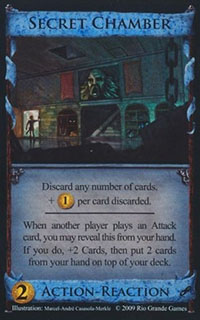
Intrigue introduces a second Reaction card, Secret Chamber. Players may reveal multiple Reaction cards in response to a single event. Each Reaction card is revealed and resolved before another Reaction card is revealed.
The second Reaction card can be one that was not initially in hand when the first Reaction card was played. For example, a player could reveal Secret Chamber in response to an Attack card and draw a Moat. After the player has completely resolved the Secret Chamber, he can still reveal the Moat in response to the Attack card.
Rules for Playing with more than 4 players
If you own both Dominion and Dominion: Intrigue, you can play with more than 4 players. Our recommendation is to use both sets of Treasure, Victory, and Curse cards in order to play 2 separate games (for example, 7 players can play one 3-player game and one 4-player game). Each group can select their own 10 Kingdom cards from both sets to play with.
The following are rules for a single game accommodating 5 or 6 players. Please note that there will be increased downtime with 5 or 6 players, so this is not recommended for new players.
To set up for 5 or 6 players, combine the Treasure cards from Dominion and Dominion: Intrigue. Use 15 Provinces in the Supply for a 5-player game and 18 Provinces in the Supply for a 6-player game.
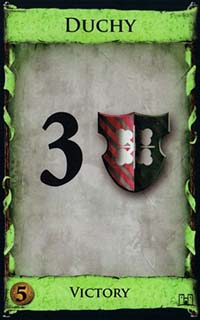
All other Victory card piles (Estates, Duchies, and Victory Kingdom cards) remain at 12 cards per pile. Use 40 Curse cards for a 5-player game and 50 Curse cards for a 6-player game.
In a 5 or 6 player game, the game ends at the end of any player's turn when one of two conditions is met: the Supply pile of Province cards is empty OR any 4 Supply piles are empty.
Continue Reading


